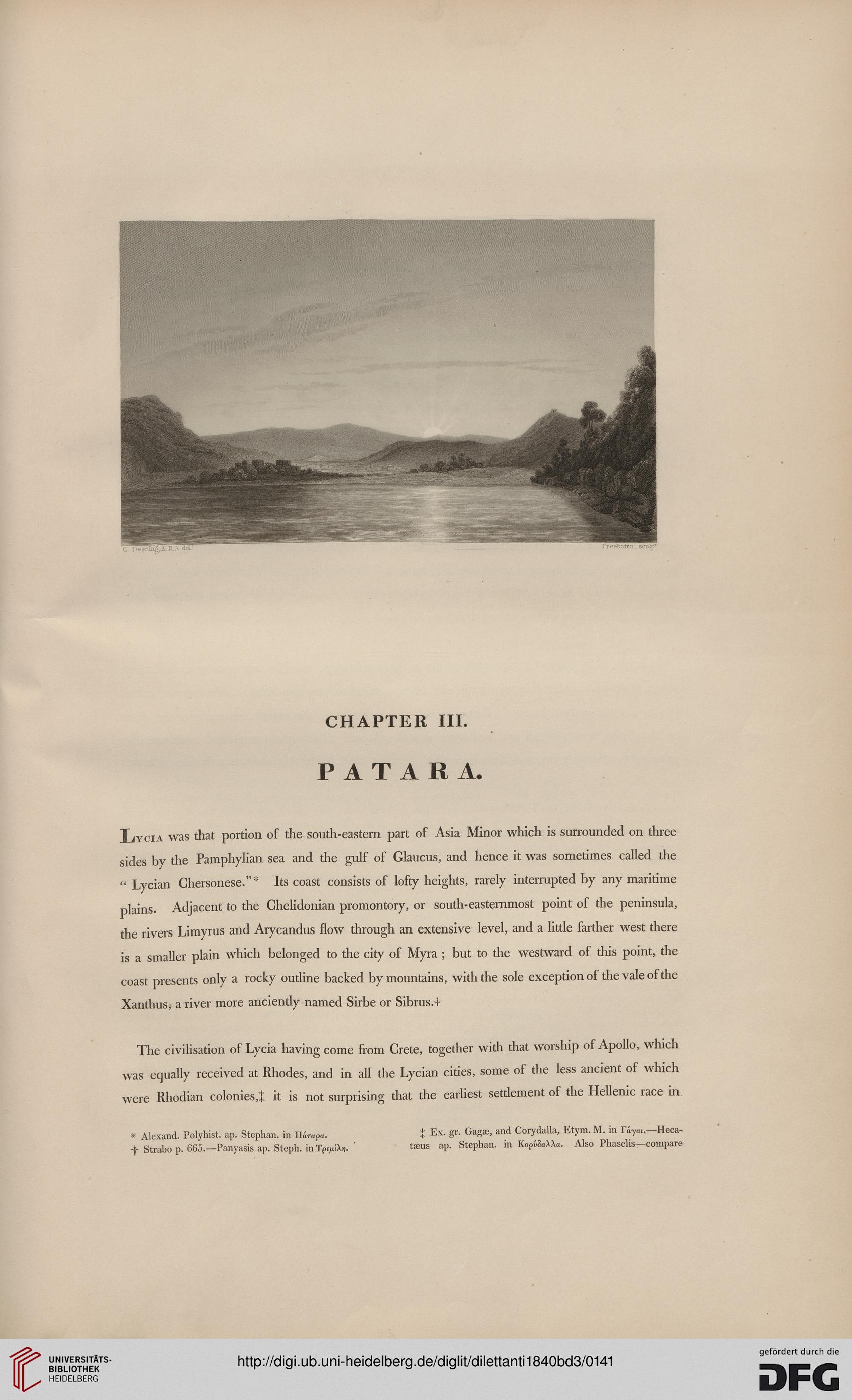FreebaxriL, scalp?
CHAPTER III.
*
PATARA.
Ijycia was that portion of the south-eastern part of Asia Minor which is surrounded on three
sides by the Pamphylian sea and the gulf of Glaucus, and hence it was sometimes called the
" Lycian Chersonese."* Its coast consists of lofty heights, rarely interrupted by any maritime
plains. Adjacent to the Ghelidonian promontory, or south-easternmost point of the peninsula,
the rivers Limyrus and Arycandus flow through an extensive level, and a little farther west there
is a smaller plain which belonged to the city of Myra ; but to the westward of this point, the
coast presents only a rocky outline backed by mountains, with the sole exception of the vale of the
Xanthus, a river more anciently named Sirbe or Sibrus.t
The civilisation of Lycia having come from Crete, together with that worship of Apollo, which
was equally received at Rhodes, and in all the Lycian cities, some of the less ancient of which
were Rhodian colonies,: it is not surprising that the earliest settlement of the Hellenic race in
* Alexand. Polyhist. ap. Stephan. in Tlarapa.
-f- Strabo p. 665.—Panyasis ap. Steph. inTp^Xn.
X Ex. gr. Gagae, and Corydalla, Etym. M. in Tayai.—Heca-
tseus ap. Stephan. in KopvSaAXa. Also Phaselis—compare
CHAPTER III.
*
PATARA.
Ijycia was that portion of the south-eastern part of Asia Minor which is surrounded on three
sides by the Pamphylian sea and the gulf of Glaucus, and hence it was sometimes called the
" Lycian Chersonese."* Its coast consists of lofty heights, rarely interrupted by any maritime
plains. Adjacent to the Ghelidonian promontory, or south-easternmost point of the peninsula,
the rivers Limyrus and Arycandus flow through an extensive level, and a little farther west there
is a smaller plain which belonged to the city of Myra ; but to the westward of this point, the
coast presents only a rocky outline backed by mountains, with the sole exception of the vale of the
Xanthus, a river more anciently named Sirbe or Sibrus.t
The civilisation of Lycia having come from Crete, together with that worship of Apollo, which
was equally received at Rhodes, and in all the Lycian cities, some of the less ancient of which
were Rhodian colonies,: it is not surprising that the earliest settlement of the Hellenic race in
* Alexand. Polyhist. ap. Stephan. in Tlarapa.
-f- Strabo p. 665.—Panyasis ap. Steph. inTp^Xn.
X Ex. gr. Gagae, and Corydalla, Etym. M. in Tayai.—Heca-
tseus ap. Stephan. in KopvSaAXa. Also Phaselis—compare





